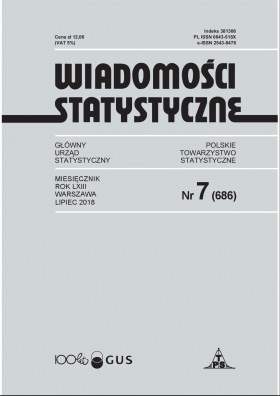Zróżnicowanie rozwoju ekonomicznego krajów UE na podstawie grawitacyjnego modelu wzrostu
Diversification of economic development of EU countries on the basis of gravity growth model
Author(s): Rafał Wisła, Katarzyna Filipowicz, Tomasz TokarskiSubject(s): Supranational / Global Economy, Socio-Economic Research
Published by: Główny Urząd Statystyczny
Keywords: development diversification; gravity growth model; labour productivity
Summary/Abstract: The aim of the article is to present the differentiation of economic development of the European Union countries in the years 2000—2015 and to simulate changes in labour productivity in the perspective of 2050. Two macroeconomic aggregates describing dynamics of development processes, i.e. labour productivity and capital-labour ratio, connected with the so-called gravity effects were used in the research. It was based on data from the United Nations Economic Commission for Europe (UNECE). The results lead to the formulation of two key conclusions. Firstly, assuming that the average investment rate from 2000—2015, 2000—2008 and 2009—2015 is maintained in the perspective until 2050, the strongest annual average dynamics of labour productivity changes is observed in the countries belongingto the post-communist group. Secondly, the adoption, for the 2016—2050 period, of the average investment rate for the entire EU economy for 2000—2015, 2000—2008 and 2009—2015, will lead to the assumption that in 2050 the productivity of large groups of analysed countries will be shaped at a very similar level.
Journal: Wiadomości Statystyczne. The Polish Statistician
- Issue Year: 63/2018
- Issue No: 07
- Page Range: 37-55
- Page Count: 19
- Language: Polish

